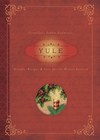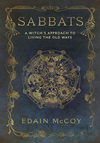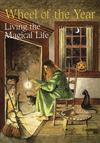Reconnect With Yuletide Tradition—or Create Your Own

The holiday period stretching from Thanksgiving to New Year's can take its toll on anyone. This unusually hectic period gets stuffed with to-do lists, shopping lists, party lists, and mailing lists to the point where you may want to crawl back into bed and ignore the holidays altogether. One way to combat this overwhelming feeling is by reconnecting with traditions; if you've always hated your holiday traditions, then revamp them to make them your own. Introduce a new activity, ritual or tradition for you and your loved ones to practice each year—one that actually means something to you.
There are many Yuletide traditions to choose from, because the Winter Solstice has been a constant marker of time as long as humanity can remember. It is only natural that every culture would create its own rites and rituals to mark the shortest day of the year, knowing that it heralds the return of the sun and lengthening days. It makes perfect sense that Christians, too, would eventually choose to celebrate the birth of their Divine Child at the same time as so many diverse groups (Egyptians, Babylonians, Greeks, Romans) had always celebrated their gods' birth, rebirth, or reinstatement. In the end, it really doesn't matter where the traditions we practice started, as long as we can attach personal meaning to them. For example, though sending Christmas cards is a relatively new custom dating back to 1843, we can all agree that Yule is a wonderful time for reconnecting with loved ones and sending them warm wishes of peace and love, whatever our spiritual path.
One very popular tradition that may have Pagan origins is decorating an evergreen tree. There are so many accounts of how this tradition started that you'll have to read a few books, and then you still won't know for sure! The interesting thing about this custom today is how widely it can vary from family to family or country to country. In some places they only decorate on Christmas Eve and surprise their children with the sight. In other places the children are active participants in the decoration, which takes place weeks before Christmas. You may have fond memories of this yourself. Several books can help you place the "Christmas tree" in a more Pagan context, including blessing the tree and choosing appropriate ornaments to symbolize abundance in the coming year, to act as protective talismans or simply to help usher in the coming spring. See Wheel of the Year by Pauline Campanelli and Yule: A Celebration of Light and Warmth by Dorothy Morrison for ideas. You can also enhance this tradition by creating a ritual out of it, including favorite music, scents (oils, potpourri, food, or drink), reading special poems or passages, lighting candles, and more. Give your creativity free rein!
And though nowadays it may reek of commercialism, gift-giving during the Winter Solstice period is a tradition that can be traced back centuries to the ancient Babylonians. It became especially popular during the Roman Saturnalia festivals. While it may seem stale, there are plenty of ways to make gift giving"feel" right. Part of that may be creating handmade gifts for your closest friends like bath salts, a magical blend of tea, baked goods, a painting, or a poem. Another may be to give a gift to the earth as well by choosing environmentally-friendly gifts and wrapping them in something other than gift-wrap—for example, in a gorgeous scarf, a crocheted or hand-embroidered cover, or even a collage of images cut out from old magazines pasted onto a brown paper bag. The place, day, time, and manner of exchanging gifts can form a family ritual, too. Just remember that the bottom line is heart: you're doing something to show your love for friends and family, not trying to buy into everything the advertisements suggest.
Another great tradition is that of the Yule Log. In Wheel of the Year, Campanelli explains this tradition:
"To Pagans of most backgrounds and traditions, the Sun represents the male God, and its death and rebirth on the Winter Solstice is seen as the death of the old solar year and the birth of the new, or the birth of the Divine Child, the Sun God of the new solar year. … And so to Pagans everywhere, the Winter Solstice, or Yule, is a solar festival, and as such is celebrated with fire. The Yule log is an ancient tradition and its burning symbolizes the blazing forth of the new-born Sun. The Yule Log is kindled with an unburned portion of the Yule Log from the previous year, and an unburned portion of it will kindle the next Yule Fire, thus symbolizing continuity. This unburned portion of the Yule Log is kept all year as a protective amulet.
"The Yule Log is selected early in the year and set aside. It is traditionally of oak. Early in the season as you begin decorating the house with great sprays of fir and sprigs of holly, you might wish to adorn the Yule Log with traditional and symbolic greens as well. The bright green needles of fir represent the birth of the new year that is about to begin. The dark needles of yew symbolize death, in this case the death of the waning year. Trailing vines of ivy represent the Goddess as the female element, as do bare branches of birch, whose wintry appearance actually promises the return of Spring. Sprigs of holly with bright red berries represent the Holly King of the dying year, while the oak log itself represents the Oak King of the new year."
If you don't have a fireplace, you can drill holes along the top of a Yule log to hold candles instead, and decorate it as detailed above. Or, for a decadent and delicious alternative, try making the lovely French dessert called Bûche de Noël—their version of the Yule Log. After all, this is sympathetic magic at its best—eating sweets during this holiday will sweeten your year to come.
Related Products



is subject to certain Terms and Conditions